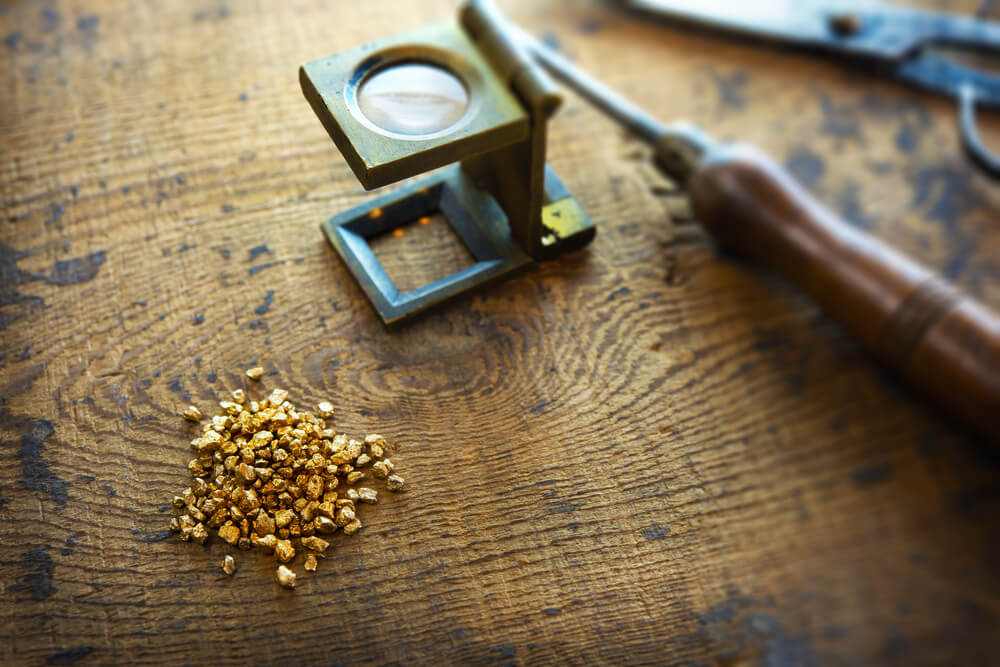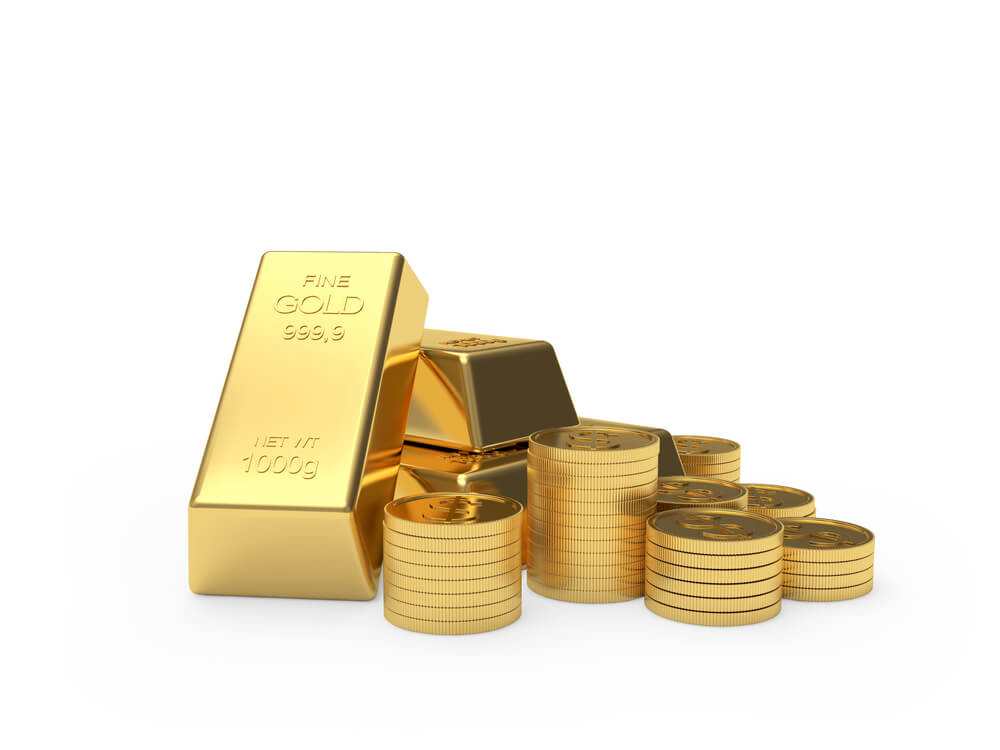
401(k) to Gold IRA Rollover Guide
Gold is a sought-after precious metal. It has been so for centuries and shall enjoy the status for decades. The most significant reason gold is so popular is its distinct look and sheer versatility. It can be used as a showpiece or be downright utilitarian. Perhaps, the biggest draw is that it holds value. That’s because, unlike paper currency, gold’s worth is intrinsic or not attached to a third party or backed by any entity.
Besides holding value, gold’s value has also gradually increased over the years. The price of an ounce of gold in 1990 was approx. $386. Currently, in 2022, it’s around $1,817. Although stock prices have increased manifold over the same period, the cost of a company’s share can sink significantly during that period. Gold investors are usually not in for such rude surprises. Gold prices are relatively steady. Notably, gold value has never hit rock bottom. Shares, on the other hand, may get annihilated.

For the reasons above, gold has never fallen out of favor with individuals who save for their future or have retirement on their minds. It is also one of the reasons many employed professionals with a 401(k) to their name are continuously looking at gold IRA rollovers. This 401k to gold rollover guide covers the topic in detail. The sub-topics discussed include:
- A brief intro to 401(k)s
- An introduction to gold IRAs
- What is a gold IRA rollover, and why consider it
- The step-by-step process to roll over a 401(k) to a gold IRA and much more
If transferring funds from a 401(k) to a gold IRA sounds complex, this guide should simplify things for you. Keep reading to get educated.
Table of Contents
What is a 401(k)?
A 401(k) is retirement savings plan to motivate or help Americans save for retirement. Only individuals employed by an American company are eligible for a 401(k)—a name inspired by a tax code section. Both the employer and employee contribute to a 401(k). Employees contribute a specific percentage of their monthly income to the retirement account. The employer contribution usually matches the employee’s share or a particular portion.
Read more: Top Gold IRA companies
A 401(k) offers multiple investment options, with the employee getting to choose where the money goes. But those investment vehicles are only stock market-focused. Gold, silver, platinum, real estate, private equity investments, venture capital, promissory notes, business partnerships, etc., are out of bounds with a 401(k). That explains the popularity of self-directed IRAs like gold IRAs—more on them later.
A 401(k) is broadly classified as traditional and Roth. They differ in when the account holder gets taxed—before contributing funds to the account or at the time of distribution. Roth 401(k) contributions are after-tax income. A traditional 401(k) entails pre-tax funds. The maximum sum an employee could allocate to a 401(k) is inflation-adjusted; therefore, the amount contributed could vary.
The yearly employee contribution limit is $20,500 for employees that are 50 years old or younger. Those above the 50-year threshold are allowed a $6,500 catch-up contribution in addition to the regular annual contribution. Kindly note that the above doesn’t include the employer’s contribution. The total yearly sum cannot be more than $61,000. For those above 50, the maximum is $67,500.
Withdrawals from a 401(k) can be made only once the beneficiary is 59.5 years old or above. In exceptional circumstances, such as a permanent disability, you can withdraw before meeting the minimum age criteria. Such premature withdrawals are referred to as “hardship withdrawal.” They don’t attract a penalty (usually 10%) but incur taxes. The withdrawn funds cannot be returned to the account. Hardship withdrawals should, therefore, always be the last resort.
Do note that you cannot liquidate a 401(k) for paying medical insurance premiums without incurring a penalty. Similarly, you cannot encash a 401(k) prematurely to foot a mortgage payment, pay school fees, etc., without paying the fine. This limitation is the same as with a traditional IRA.
What is a Gold IRA?

A gold IRA is a self-directed individual retirement account (SDIRA) for physical gold investments. SDIRAs allow investments in gold, precious metals, valuable commodities, etc. These aren’t allowed inside a traditional or Roth IRA. People willing to invest or save wealth for retirement in these assets and want to qualify for tax savings look at a self-directed IRA, like a gold IRA.
There are specific rules to managing a gold IRA and maintaining the physical gold pieces stored under self-directed retirement accounts. There are multiple stakeholders to the account, including the account holder, gold IRA custodian, depository, and precious metals dealer. Storage is a significant consideration. You should store the gold in a facility approved by the IRS (Internal Revenue Service), which could be a depository or bank. Similarly, the physical gold must be IRS-approved precious metals.
The IRS has set annual contributions to a gold IRA at $6,000 for 2021 and 2022. If you’re 50 years or older, you may contribute an extra $1,000, taking the total to $7,000. You may take distributions from your gold IRA after turning 59.5 years old. Withdrawals made earlier could lead to an extra 10% tax. Not to mention, these distribution rules are the same as any existing traditional IRA. The distributions could mean liquidating the gold IRA metals or taking the physical gold into possession.
Do note that you may set up your gold IRA as a traditional or Roth IRA, simplified employee pension (SEP) IRA, or spousal IRA. People usually choose between a Roth or standard IRA based on their tax obligations or the tax brackets they fall under. A Roth-style gold IRA is recommended if your tax rates will likely be higher at the time of retirement than now. If your tax situation is the opposite, consider a traditional gold IRA. Similarly, evaluate the other gold IRA arrangements. Discuss them with your gold IRA provider.
A gold IRA also has something called a “required minimum distribution.” As mentioned above, gold IRA distributions start when you turn 59.5 years old. But the distribution is not mandatory. If you choose to keep the money in the IRA, that works too. However, once you turn 72, a minimum distribution sum becomes compulsory if you still postpone the withdrawal. Do note that only traditional gold IRA has RMD requirements. Roth gold IRA doesn’t.
What is a Gold IRA Rollover? Why Roll Over a 401(k) to a Gold IRA?
A gold IRA rollover is moving funds from a 401(k) to a gold IRA (partially or fully) to buy gold bullion coins and gold bars and store them in an IRS-approved repository. The process is called “rollover” because the funds move from a 401(k) to a gold IRA, two different retirement account types. If moving the money between two 401(k)s or a similar tax-advantaged retirement account, the fund movement would be called a “transfer.” Why roll funds from a 401(k) to a gold IRA?
Because a 401(k) doesn’t allow investing in gold and silver and other precious metals or valuable commodities. For those wanting to do so and diversify their investments overall, a 401(k) is pretty much a deal-breaker. Distributing a 401(k) is also mandatory when you quit your job and want to venture independently as an entrepreneur. A 401(k) is not available to self-employed professionals or the unemployed.
Even ownership of gold derivatives like options or futures contracts is not allowed in 401(k) retirement savings accounts. Some 401(k)s permit gold investments through ETFs (exchange-traded funds) or mutual funds. Gold stocks are permissible under most 401(k)s.
Also, a 401(k) is very traditional or stocks-focused, carrying all the risks associated with the financial market. If a stock market rallies, your 401(k) savings also gain strength and momentum. And when the market plunges, your 401(k) takes a hit. For those wary of that and want their retirement savings to have some form of protection from the ebbs and flows of the stock market, a gold IRA is ideal.
Gold IRAs do not just safeguard wealth but also eliminate the hassle associated with storing gold. Withdrawing money from a 401(k) is not advised since it attracts taxes and penalties. But if you roll that money over to an IRA, like a gold IRA, the withdrawn funds will be tax-exempted for the particular year.
To summarize, here are the benefits of rolling over a 401(k) to a gold IRA or other precious metals IRAs in a few words:
- Inflation protection
- Savings diversification
- Currency devaluation protection
- No counterparty risk
- Financial security
- Lower fees (administrative and management)
Gold has been a reliable value store over decades, if not centuries. Moreover, the yellow metal is not vulnerable to fraud and identity theft perpetrated by hackers online. The “zero counterparty risk” denotes that gold’s value is intrinsic or its performance is not dependent on another asset’s show. In case you were wondering, a gold IRA offers the same tax advantages as a traditional IRA.
When Should You Not Rollover a 401(k) to a Gold IRA?

There are scenarios or investment objectives that render moving funds from a 401(k) to a gold IRA not a fruitful exercise, which include:
- Your 401(k) is close to its maturity date.
- Your growth objectives are higher, and you have the appetite for more significant risks.
Besides the above, the following advantages of a 401(k) may nudge you toward sticking with your existing retirement account:
- There are no custodian and storage fees with a 401(k) since no physical or tangible items are involved.
- A 401(k) offers credit and bankruptcy protection. Gold IRA rollover rules are murky at best.
In case you’re wondering what the options are after quitting your job and having to distribute the 401(k) with your former employer, you can always set up a 401(k) with your current employer or set up a solo 401(k) or SEP IRA if self-employed.
How to Roll Over a 401(k) to a Gold IRA?
To roll over a 401(k) to a gold IRA, it’s imperative to have a sound physical gold IRA rollover strategy in place. Basically, have your new gold IRA set up beforehand to roll with your gold IRA investing plans. Taxes apply if you withdraw funds from your 401(k) and the money remains in your bank account for more than 60 days. Fortunately, gold IRA companies are more than willing to help with the gold IRA rollover process, be it a direct rollover or an indirect rollover. They take care of the paperwork and all other formalities there are.
Find a Gold IRA Company
To create a gold IRA account, you need a gold IRA service provider to manage your funds, help you select suitable precious metals, and navigate the available IRA space. Traditional banks and other financial institutions do not offer gold IRA or self-directed IRA services. You’d need a specialized company’s offerings. Some of the best gold IRA companies around include Goldco, Augusta Precious Metals, American Hartford Gold, Birch Gold Group, and Noble Gold.
These companies are known for their solid track record, validated by glowing user reviews and high star ratings from reputable rating firms such as BBB (Better Business Bureau) and BCA (Business Consumer Alliance), to name a few. Click on the links above to know more about them and our reasons why they stand out from the crowd.
If you’d like to look beyond the above, which we don’t recommend, here are a few things to be on top of:
- Ensure the company has all the necessary and appropriate registrations, licenses, bonds, and insurance to safeguard your investment. And verify those qualifications.
- The gold IRA service provider is transparent about its costs. And also see how reasonable they are.
- The company’s track record must be strong, with unbiased third parties and real customers saying good things about the business.
- Ensure the company is not all over the internet trying to market gold IRAs. Its focus should be less on promoting its services and more on educating people.
- Choose a company based on your specific goals and requirements. The best gold IRA company for others may not be the right fit for you.
The gold IRA businesses mentioned above meet all the above requirements. But some of them may not be the right fit for you. In that case, it’s advisable to shop around.
Create a Gold IRA Account
After zeroing in on a particular gold IRA business, contact them and follow the procedures to set up an account with them. You would have to fill out an application (paper or online). The precious metals IRA account will be up within 48 hours or two business days of application receipt. In some rare cases, it could take longer.
Choose the Other Stakeholders
Creating an IRA account is not all. You’ll then have to select a precious metals trader and a depository. The physical precious metals seller you choose should be a part of the American Numismatic Association (ANA), Professional Numismatists Guild (PNG), Industry Council for Tangible Assets (ICTA), or similar industry trade groups. Augusta Precious Metals is one of them.
Your gold IRA firm can chip in if you don’t want to do all the work and want expert assistance. They may have existing relationships with a dealer whom they may recommend. Ensure those dealers are duly recognized. You can take recommendations of a trustworthy gold IRA company blindly.
Therefore, finding the best gold IRA company to do business with is imperative. They form the base for your gold IRA journey. Once the foundation is correct, other aspects are easy to implement. The right gold IRA companies also associate with the best gold IRA custodian. Basically, associating with the right company takes care of many things by itself.
Move Funds
Once you’ve set up your gold IRA account, transfer the money from your 401(k) or personal account to the IRA. If the funds travel directly from the 401(k) to the IRA, it’s a direct IRA gold transfer. If the money is routed via your bank account, it’s an indirect transfer. The drawback of an indirect rollover is possible taxes. In other words, surcharges will apply if the funds are not expended on bullion bars and coins within 60 days after being withdrawn.
You may ask your employer to make a direct gold IRA transfer. Your gold IRA account custodian will correspond with your ex-employer to facilitate the process. If setting up a self-directed IRA is taking time, or you’d like to carry out the fund transfer between accounts yourself, let your employer know you want the 401(k) balance moved to your personal account instead.
Do note that your gold IRA company could have a minimum account balance requirement, which could be $10,000 or lower and up to $50,000 or more.
Purchase and Store Gold
Once the 401(k) funds have been transferred to your gold IRA, purchase precious metals with that money. Your gold IRA company will help you buy the right kind of gold (IRA-eligible gold) for the account and perform the transactions for you. Do note that not all gold coins and bars make the cut. The IRA custodian’s expert guidance will come in handy if you have little to no idea about IRA-qualifiable gold coins and bars.
The gold bought under an IRA should be 99.5% pure and made by an IRS-approved/recognized mint (NYMEX/COMEX-certified). In a gold IRA, you cannot include gold bullion bars and coins not meeting the above requirements. The American Gold Eagle coin is the only exception, or it’s allowed in a gold IRA despite being 91.67% (22 karats) pure. Your service provider will apprise you of your gold coin and bar options. Ultimately, you, the self-directed IRA account owner, choose.
Once you give the green light, the IRA company buys the gold and directs the dealer to send it to an IRS-approved depository or storage place, as you cannot store IRA gold in your home. If you take possession, taxes will apply. In the repository, the gold is kept separately or with other IRA gold. The non-discrete storage arrangement is referred to as “commingled storage.”
Read more: Best gold IRA companies
Conclusion
Gold or a precious metal IRA is a special kind of IRA. It is for people worried about market volatility and inflation diluting their retirement savings and those who want exposure to gold without the storage hassles. Kindly note that a gold IRA makes sense only if it diversifies your investments. If your portfolio is gold-focused, you are stunting its growth.
If you don’t want to move your 401(k) funds to a precious metals IRA, there are other retirement account options, as stated earlier. For instance, you may withdraw the 401(k) money and invest them in mutual funds and ETFs linked to gold and other precious metals. Those, too, offer exposure to gold or silver with less risk and cost. However, you don’t get to own the metal physically. Gold IRAs are unique in that way.
If you’re still on the fence or want to know more about gold IRA investments before making a move, click here. Regardless, we believe you have a reasonably good idea about rolling over a 401(k) to a gold IRA. With gold IRAs gaining popularity in the last decade and so many gold companies springing up, setting up a gold IRA has never been this straightforward.
FAQs
How long does a 401(k) to gold IRA rollover take?
Generally, the 401(k) to gold IRA process takes two to three weeks. It can take longer but rarely fewer days as multiple steps are involved. If moving the funds from a 401(k) to a gold IRA is one leg of the course, creating a gold IRA is a separate process that takes time.


